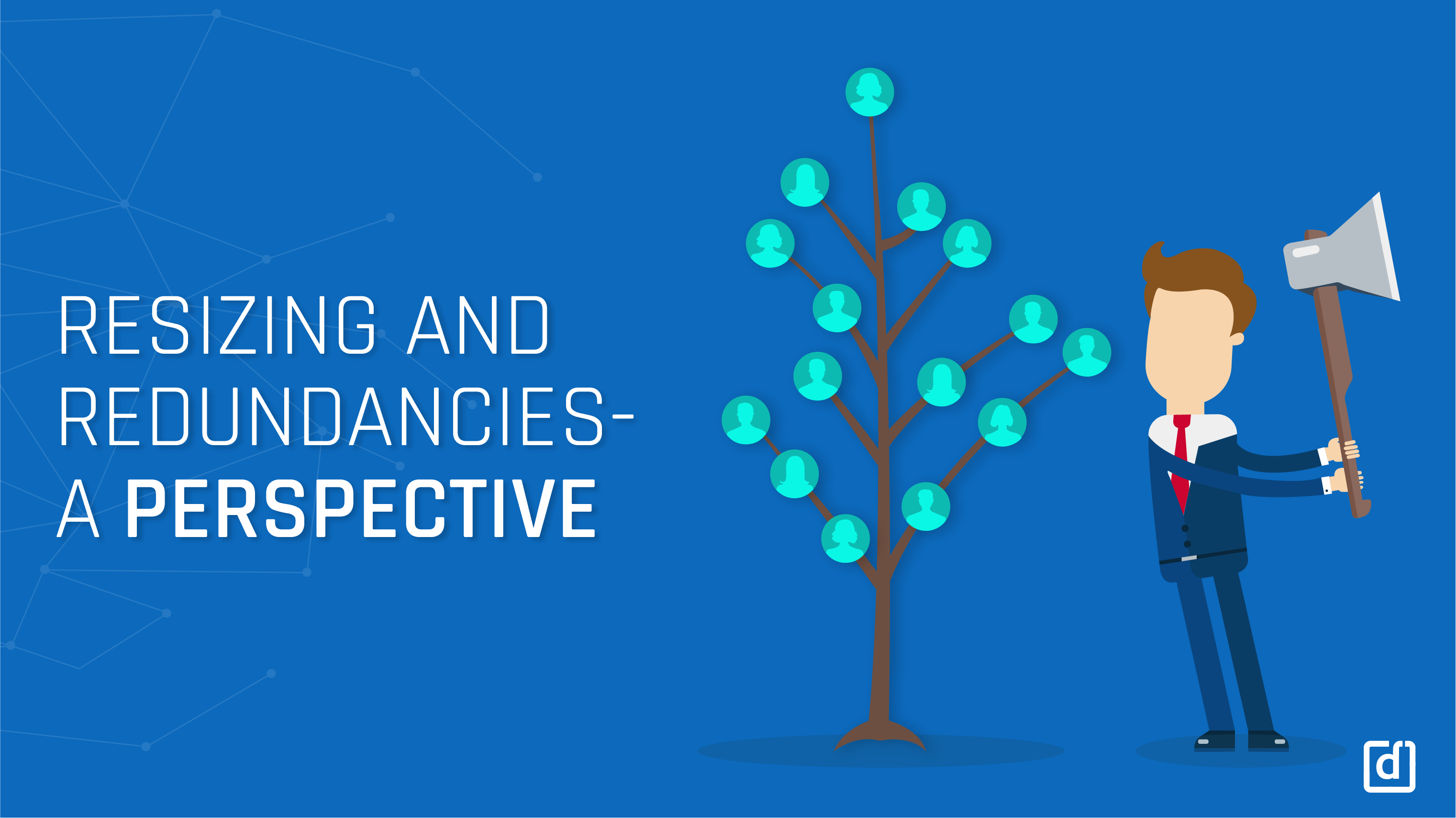
Workforce reduction is considered to be a disgraceful and unpleasant element of management practice, and one that is known for being hurriedly carried out and quickly forgotten. Nobody enjoys laying off people, yet all of them, without any exception, have to brace themselves for the eventuality. But is it ethical, is the question here.
Is Downsizing a right thing to do?
In recent years, sustainability has become a hot topic, and now it is something that every organization wants to be identified with. But they should also realize that for that name and fame an organization must recognize, value and promote the capability of its people. Respecting and giving value to its human resources is the first thing to reflect on for longer sustainability.
Deciding the right thing to do is never easy. The ethics of layoffs always come into sharp focus, not just for the employer who is making the cuts, but also for the remaining employees who would stay. Downsizing and restructuring are often used interchangingly but organizations can restructure without shrinking in size and vice versa. Well! it all depends on the viewer’s perspective of the situation.
Why layoffs take place?
A business downfall is the most common reason for layoffs, but it can also occur for reasons other than a weak business condition. For example :
-
Automation and adoption of new technology:
Automation is around every corner of a business outline. In fact, it has become the first name of popularity in business. However, nobody could have ever realized that it can throw people out of work. Adoption of new advanced technology can also become a pain for many and could become a reason to lose their jobs. These circumstances can be handled by on-time planning. Organizations can retrain and re-skill employees or move them to other parts of the business to avoid having to lay them off.
-
Outsourcing of businesses:
This is one major factor for layoffs in many of the large companies across the globe. Outsourcing reduces cost and headache for organizations and therefore is most preferred as well. Outsourcing or shutting down a location, however, can have a huge impact on the surrounding community's economy and morale. So it is recommended for companies to show genuine concern for the workers and provide them with some compensation, and thus eliminate the risk of screwing a company’s public reputation.
-
Mergers and Acquisitions:
This can be another reason for employee redundancy. There are many examples of this in the previous past. Change in leadership, vision and direction could bring about layoffs. The objective in such cases is to achieve the synergies on which the merger is predicted. Shutting down an underperforming business or a division or unit can lead to employee layoffs.
Decision - To pool or not to pool?
Choosing the correct pool for downsizing is vital, because if an organization happens to choose the incorrect one then there are high chances of back-fire for the organization which may lead to business downfall, in a faster pace. The first thing to decide even before choosing whom to cut, is to think about the company’s future direction because only then is the right streaming possible. However, in many circumstances, the choice of the pool will be obvious and can be decided with ease. For example, the identification marks can be, reduction in work carried out by a team, therefore all employees in that team will be in the selection pool. Continuous feedback and a close look at the performance of employees on a regular basis is therefore vital to track and consider the type of work which is reduced and the respective performance of an employee.
How to handle the consequences / repercussions?
Communicating and engaging with retained employees is as important as dealing with those being laid off. Because employees who remain are often assailed with the question “When will it happen to me”? It can lead to an overall collection of behaviours such as decreased motivation, morale and loyalty towards the organization, and increased stress levels and skepticism. Employees don't have control over how an organization handles a layoff, but they do have control over how they choose as individuals to respond to it. The HR team plays a significant role in implementing measures to bring back the confidence in the employees and making them realize the benefits of the decision. It is not the time to expect an immediate return to total productivity. Many organizations offer counseling support, to deal with the psychological effects of downsizing on departing employees. It is also highly recommended for HRs to maintain contact with terminated employees as they could be potential re-hires for the same organization.
Is there an alternative to downsizing?
Yes, there is! Below are few of them to make layoffs less painful following these alternatives:
- Freeze on hiring, promotions, incentives and pay hikes.
- Freeze on padding positions left vacant when employees take VR scheme.
- Cutting cost on other resources.
- Salary cuts to some level of percentage.
- Letting employees take unpaid time off.
- Reducing authorized overtime pay.
- Job sharing and part-time work and pay.
- Providing voluntary termination incentives to allow employees to decide whether to quit in exchange for a package of benefits.
Implementing these strategies won’t eliminate the need for layoffs completely. However, it can certainly reduce the percentage of lay-off in an organization.
It is also worth remembering that downsizing is traumatic not only for those who depart but also for those who remain. Redundancy can drive away stars as well as laggards. Therefore it is always important to have an effective workforce planning at the start of the year and hire cautiously when there is a sense of cut-offs. After all, the best way to prevent layoffs is to not hire them in the first place. Therefore, business judgement is the first defense against mass layoffs.



Speak Your Mind